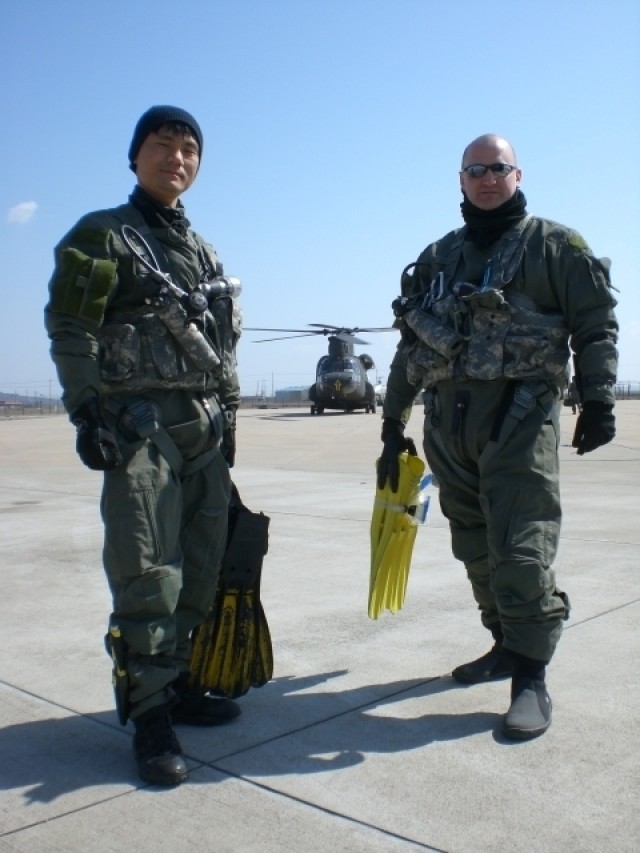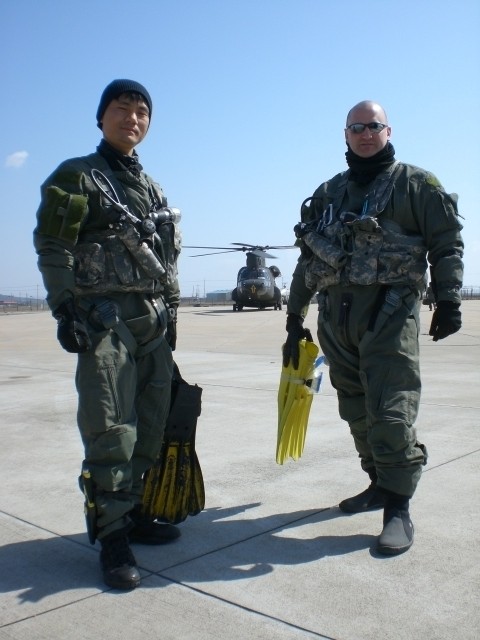KUNSAN, South Korea - Imagine 20-degree weather, 30-knot winds, 41- degree water, and nine foot waves.
This is what pilots from 4th Battalion, 2nd Aviation Regiment, would have to endure should the unthinkable happen, an 'aircraft-ditching situation.'
The 4-2 "Attack" conducted a live-fire off the west coast of South Korea near Kunsan Air Force Base at Jik-Do Island. They had their "angels in the sky" beside them, Mr. Jon "Sharky" Pearlman and O, Myong Yong, standing ready to rescue any pilot who found him or herself in the water.
The annual training event in which Apache pilots get to fire an anti-tank Hellfire missile, marks the first time that the unit has incorporated rescue swimmers from the 8th Army Water Survival Training Center, better known to Army Aviators as the 'Dunker.'
Made famous by the movie "The Guardian," these men became the "rescuers in the dark." Pearlman, a long-time veteran of the water, and the chief of aviation water survival, was the primary rescue swimmer, accompanied by his assistant swimmer, O, a prior ROK Special Forces Soldier also hailing from the "dunker."
Due to the overwhelming dangers of overwater missions in the winter, aircrews are required to wear an anti-exposure suit called a Mustang Suit . Wearing these suits protects against harsh elements, and greatly increases the survivability rate of an aircrew in a ditching situation by buying valuable time for rescue crews to pluck the pilots out of the water.
High above the Apaches were two CH-47D Chinooks from Company B, 3rd Bn., 2nd Avn. Regt. and one UH-60L Blackhawk from A Co 3rd Bn., 2nd An. Regt. Providing support to aircraft and aircrews as well as overwater coverage, the aircraft were equipped with a rescue hoist, caving ladder, and if all else fails the Chinooks were capable of landing in the water and floating like a boat.
The pilots were happy to have the Rescue Swimmers supporting the mission. It was very comforting for them to know that should the unthinkable happen, and an aircraft needed to be ditched in the icy waters, swimmers would soon be in after them to help hoist them to safety.


Social Sharing